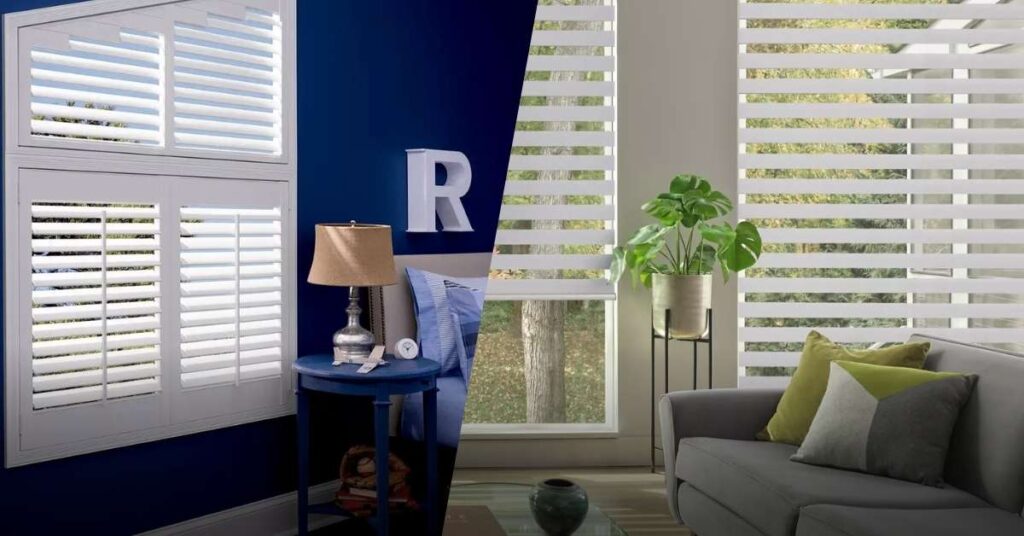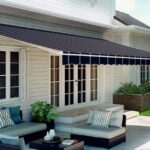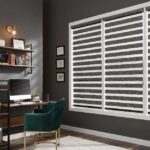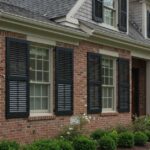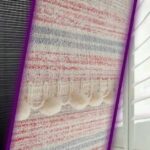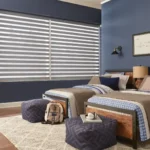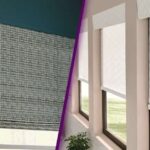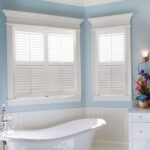The Big Picture: Why This Decision Matters
Windows shape the aesthetic, comfort, and energy footprint of your home. Selecting the right covering affects light control, privacy, insulation, and overall home décor. Below, you’ll see how shutters versus shades stack up in day-to-day performance and long-term value.
What Are Shutters?
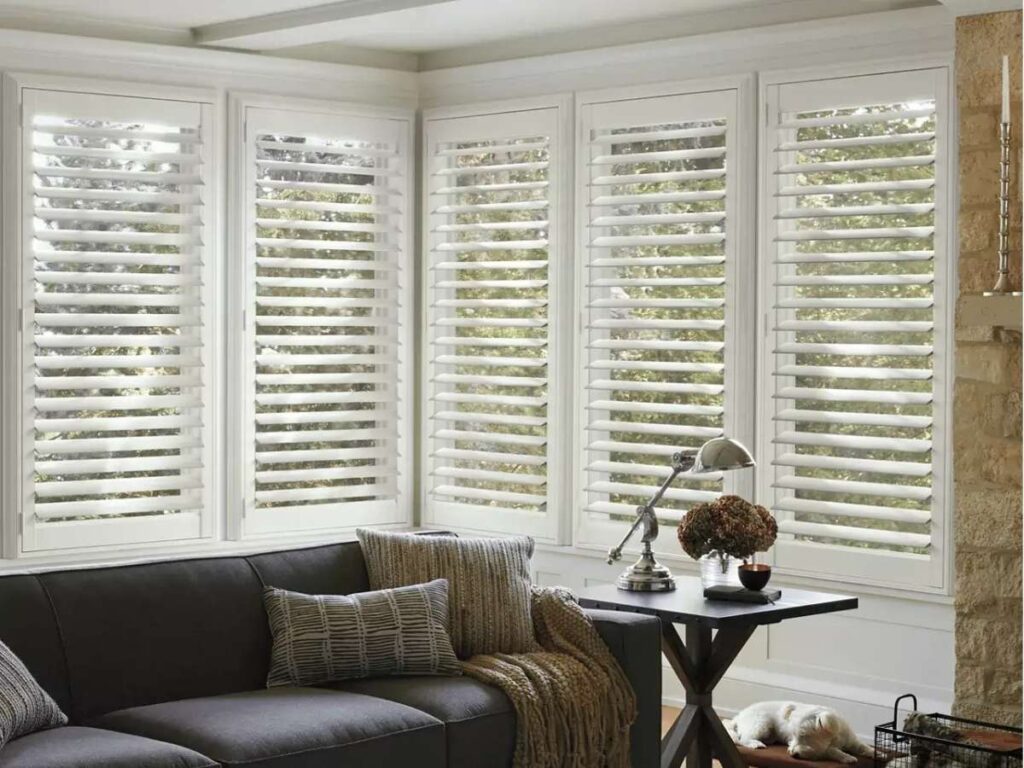
Advantages
- Durability: Solid construction means shutters can last 20+ years with proper care.
- Precise light control: Tilt louvers to filter daylight while maintaining outside views.
- Insulation: The frame creates an additional barrier, improving energy efficiency year-round.
- High-end style: Shutters add architectural character that can boost resale appeal.
Disadvantages
- Cost: Up-front price is generally higher than most shades.
- Installation: Custom sizing and professional fitting are almost always required
- Weight: Large panels can be heavy, limiting some design choices.
What Are Window Shades?
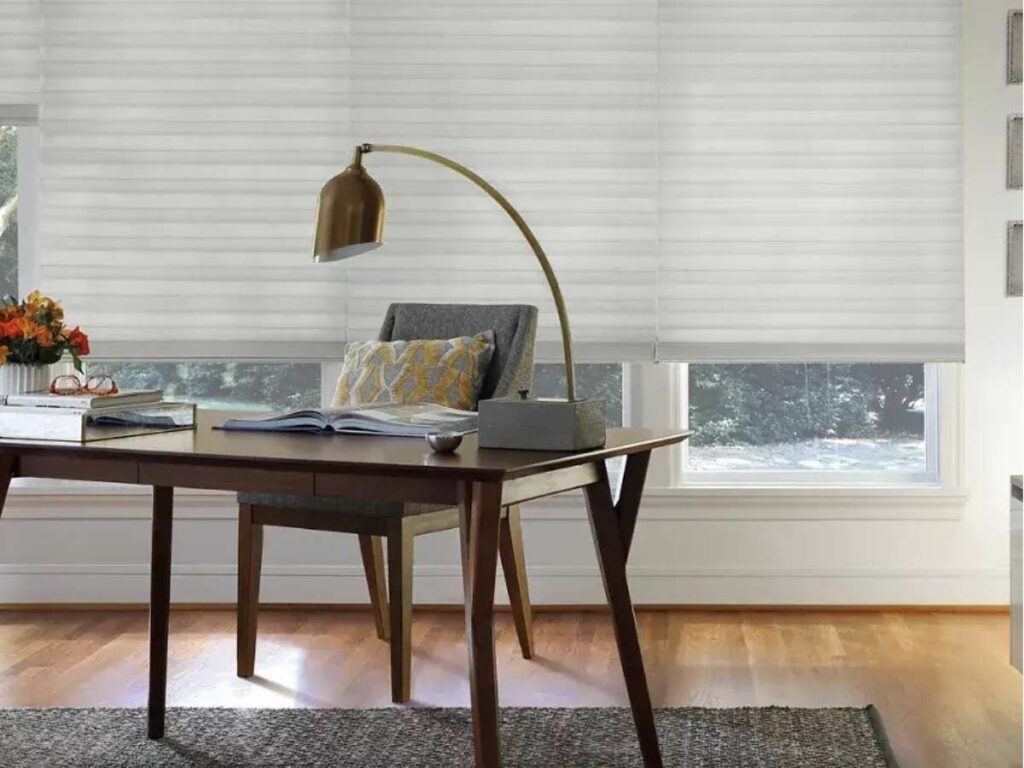
Advantages
- Soft aesthetic: Fabric textures introduce warmth and color into your interior design.
- Versatility: From blackout to sheer, you’ll find countless material and opacity options.
- Budget flexibility: A wide price band accommodates starter condos and luxury remodels alike.
- Compact profile: Shades disappear neatly into a cassette, preserving trim details.
Disadvantages
- Durability: Fabric can fade or fray over many years, especially in strong sun.
- Cleaning & maintenance: Dusting is easy, but deep stains may require replacement.
- Less architectural impact: Shades accent décor but don’t add the built-in look of shutters.
Comparing Shutters from Shades
Feature | Shutters | Shades |
Light Control | Louver tilt for nuanced daylighting | Raise/lower; opacity set by fabric |
Privacy | Excellent—even with louvers partially open | Sheer-through-blackout options |
Insulation / Energy Efficiency | High (rigid barrier + air pocket) | Good with cellular or thermal linings |
Durability | 15–25 years; scratch-resistant | 5–15 years; fabric may fade |
Style & Aesthetic | Architectural, timeless | Soft, minimalist to luxe |
Material Choices | Wood, composite, vinyl | Linen, polyester, bamboo, blends |
Customization | Stain/paint colors, louver size | Patterns, textures, motorization |
Maintenance | Dust or wipe louvers | Vacuum brush, spot clean |
Cost | $$–$$$ | $–$$$ (wide range) |
Installation | Professional recommended | DIY possible, pro ensures fit |
Key Decision Filters
Light Control & Privacy
If you need micro-adjustments—say, to block glare while still enjoying the view—shutters are unrivaled. Shades win when you want an all-or-nothing approach or a soft glow through sheer fabric.
Energy Savings & Insulation
In Maryland’s humidity-heavy summers and chilly winters, energy performance matters. Cellular shades form honeycomb pockets that trap air, but plantation shutters add a wood barrier plus air gap between louvers and glass. Both reduce HVAC load; shutters edge ahead in four-season efficiency.
Style & Aesthetic Goals
- Traditional / Coastal / Craftsman homes often lean toward shutters’ carpentered vibe.
- Modern lofts may prefer the sleek line of roller shades or motorized screens. Your wider home décor theme should lead the way.
Budget & Installation Timeline
Need a quick refresh? Ready-made shades can go up this weekend. Shutters, by contrast, require measuring, manufacturing, and professional installation—usually a four-to-six-week turnaround.
Room-Specific Considerations
- Kitchens & Baths: Moisture-proof composite shutters or PVC roller shades.
- Bedrooms: Blackout cellular or Roman shades for sleep; shutters if you want dawn tilting.
- Living Rooms: Layer light-filtering shades under decorative drapery, or let shutters frame picture windows.
Key Takeaways
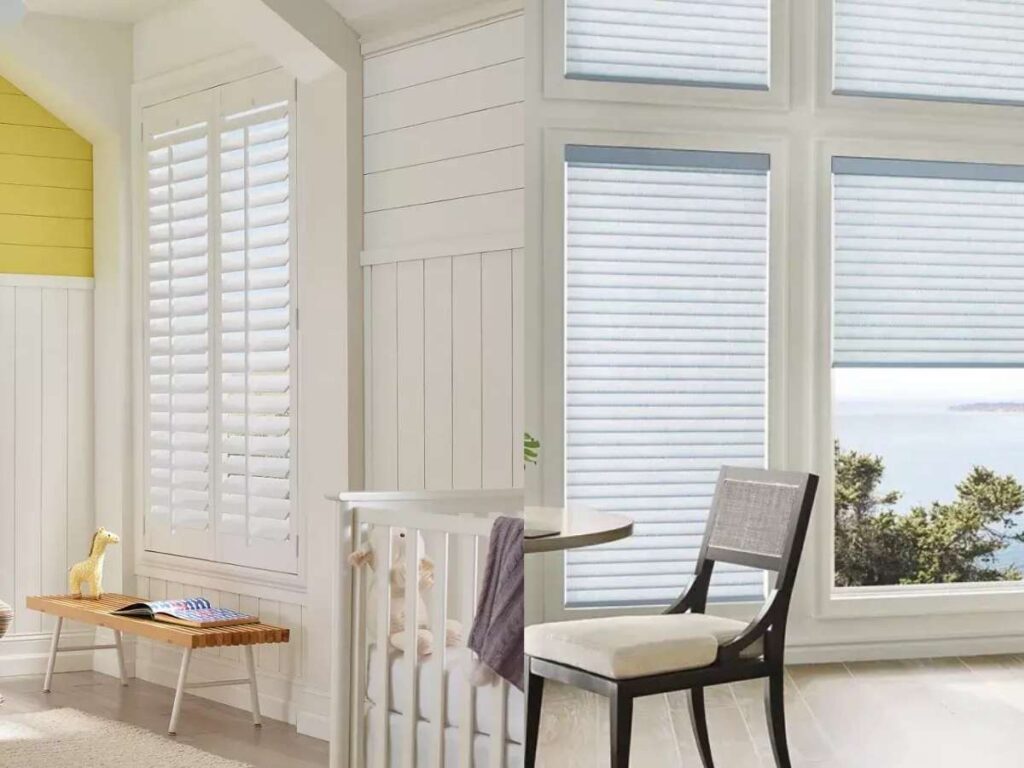
- Shutters versus shades boils down to permanence vs. flexibility. Shutters are a long-term investment that adds architecture; shades adapt to trends and budgets.
- Light control and insulation differ. Louvers offer granular daylight tuning, while cellular fabrics focus on thermal performance.
- Maintenance varies. Hard surfaces dust off quickly; fabrics may need occasional replacement.
- Cost trajectory matters. Expect to pay more up front for shutters, yet recoup value through durability and energy savings.
- Style is personal. Evaluate which look enhances your existing interior design rather than forcing a fit.
FAQs About Shutters vs. Shades
1. Are shutters more energy-efficient than cellular shades?
Shutters provide strong insulation by creating a rigid barrier and sealed airspace, but premium cellular shades with multiple cells can rival their performance. Your window size, orientation, and glass quality will influence actual savings.
2. Can I install shades now and add shutters later?
Absolutely. Many homeowners begin with shades for immediate privacy, then upgrade to shutters once budgets allow. Just remember that inside-mount shutters need adequate frame depth; measure accordingly.
3. Which option works best for hard-to-reach windows?
Motorized shades excel in high clerestories or behind tubs. While motorized shutters exist, they’re rare and costly. For tall or angled windows, a powered shade is usually the practical choice.
Ready to Weigh Your Options in Person?
Seeing textures and finishes under your own lighting makes all the difference. MITS Rockville offers no-pressure, in-home consultations where you can compare louvers, fabrics, and control systems side by side.
Book your complimentary design appointment today and discover whether shutters or shades are the perfect match for your Rockville home.

